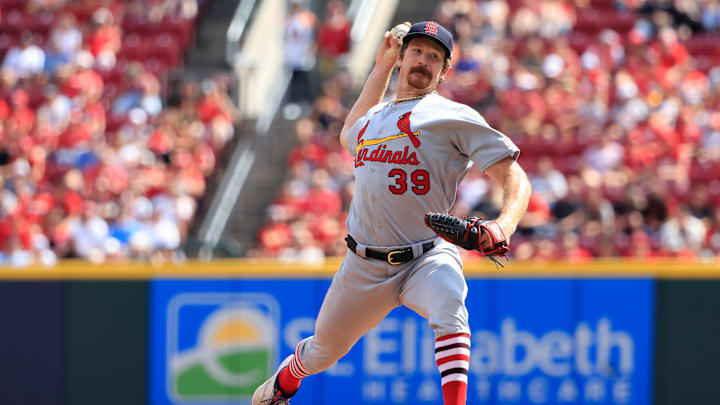This article is part one of a two-part series exploring the St. Louis Cardinals' average player age breakdown. In this piece, I will be looking at the team's average pitcher age. Next, I will analyze the team's average age for their batters.
The St. Louis Cardinals will have one of, if not the, oldest rotation next year in baseball. After signing Sonny Gray, Lance Lynn, and Kyle Gibson, John Mozeliak created one of the most veteran and experienced starting pitching staffs in team history.
The team's five projected starting pitchers according to FanGraphs Roster Resource have an average age of 35.02 years. That would easily make them the oldest rotation in baseball next year. Once you throw in the projected relievers next year, the age significantly decreases to 31.12 years. The average age of a reliever for 2024 is 28.68 years.
While the bullpen is relatively young with players such as Andre Pallante, Zack Thompson, and JoJo Romero, the starting rotation is quite experienced. Age can be beneficial or detrimental to a team; on one hand, these pitchers have loads of experience to draw upon. They also have been able to hone their skills and develop their craft. Alternatively, they have a lot of mileage on their bodies. Weariness, fatigue, and injuries are more likely to occur in older players.
I was curious to see how other rotations and pitching staffs with an advanced age fared in St. Louis Cardinals' history. Baseball-Reference provides information about teams of old including the average age for batters and pitchers. The average pitcher age of 31.12 years is tied for the fourth oldest pitching corps in franchise history. Only the 1927,1928, and 1929 teams had older staffs, and the 2003 staff had the exact same average age.
Keep in mind that there is no direct correlation between pitcher age and team success. For example, the youngest staff in 1888 ended up losing the World Series that year. The 2011 St. Louis Cardinals had the tenth-oldest pitching staff, and they won the World Series. It is a general crapshoot, but we can parcel out some important qualities in pitching staffs when analyzing average age.
